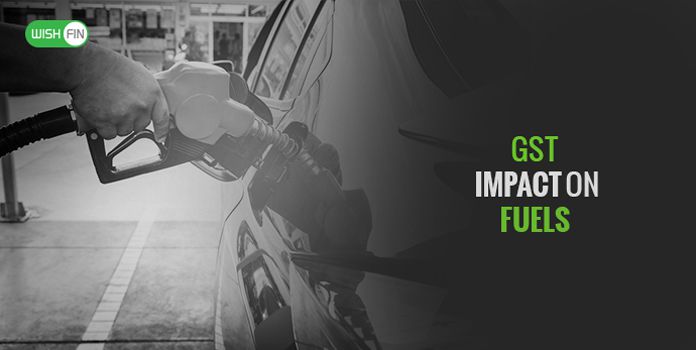GST Impact – Will Petrol, Diesel & CNG Prices Go Down?

Last Updated : Jan. 4, 2018, 10 a.m.
With the clamour for bringing petroleum products under the ambit of Goods and Services Tax (GST) getting louder by the day, Finance Minister Arun Jaitley announced in Parliament that the government is mulling to include petrol, diesel and other allied products under the uniform tax regime. In December 2017, Jaitley was quoted in media saying that the government was planning to bring petroleum products under GST and hoping for a consensus from the states on the matter.
A few days back, GST Council Member and Bihar Finance Minister Sushil Modi expressed his support for the inclusion of petroleum products under the ambit of the new single indirect tax regime.
If the government does come with such a legislation, it will bring a smile on the face of the common man by reducing the prices of petrol and diesel substantially. The price reduction would translate into significant savings for the consumers. How much savings can be made? You may be asking this question, right? Well, you can know all that and more in this article showing the possible impacts of GST on petroleum products. So stay tuned to the information below.
GST Impact on Petrol & Diesel Prices
If the GST is rolled out on petrol and diesel, existing taxes such as Value Added Tax (VAT) and excise duty will get removed and thus lessen the tax burden to the tune of 22%- 35%.
The production cost of petrol, which is sold at around ₹70 per litre across petrol pumps in the national capital Delhi, stands at about ₹32 per litre. On the other hand, diesel costs 59.82 per litre across the petrol pumps. But the cost of production is around ₹33 per litre. How does the retail price zoom so much, then? Take a look below to know the same.
Tax Structure of Petrol in Pre-GST
| Taxes & Other Levies | Price per Litre (In ₹) |
|---|---|
| (A) Excise Duty | 19.48 |
| (B) VAT (27% of Basic Price + Additional Cess) | 14.96 |
| (C) Commission of Dealer | 3.23 |
| (D) Retail Price | 69.97 |
| (E) Actual Cost of Production {D- (A+B+C)} | 32.3 |
Petrol Likely to be 35% Cheaper Post GST Implementation (If Implemented)
Yes, excise and VAT will make way for a single GST tax, if it sees the light of the day. Taking a cue from the table above, the cost of production plus the commission of dealers amount to ₹35.53 per litre. Even if the GST Council keeps petrol under the highest tax slab of 28% , the price will be ₹45.48 per litre (approx.), nearly 35% lower than what’s being charged at the petrol pumps.
Tax Structure of Diesel in Pre-GST
| Taxes & Other Levies | Price per Litre (In ₹) |
|---|---|
| (A) Excise Duty | 15.33 |
| (B) VAT (27% of Basic Price + Additional Cess) | 8.44 |
| (C) Commission of Dealer | 2.17 |
| (D) Retail Price | 59.82 |
| (E) Actual Cost of Production {D- (A+B+C)} | 33.88 |
Diesel Prices to Soften 20% Post GST (If Implemented)
If diesel is brought under GST, a total tax component of ₹23.77 per litre will get removed while calculating the retail price of the fossil fuel. If we add dealer commission and cost of production, the total comes out to be ₹36.05 per litre. Post 28% GST, the diesel will cost ₹46.14 per litre (approx.), making it 22.86% cheaper compared to the existing rates.
GST Impact on CNG Prices
Compressed Natural Gas, abbreviated as CNG, generally attracts three basic levies –
- 5% Basic Custom Duty
- 14% Additional Custom Duty
- 14% Basic Cenvat Duty
The combined duty comes out to be 33% over the cost of production. For instance- CNG is priced at ₹38 per kg (including tax) in Delhi. In that case, the cost of production is likely to be ₹28.57 per kg (approx.) per kg. CNG will cost ₹36.57 per kg (approx.) even with a 28% GST tax slab (if GST is implemented).
Note – The price details shown are applicable to refilling fuel at petrol pumps in the national capital Delhi. The prices not only vary from state to state but also time to time, based on the variation in refining and other costs pertaining to the fuels.
So, you checked out the impact of highest GST tax rate slab on petrol, diesel and CNG prices. The prices would come down as illustrated in the article. Keeping these fuels under the lower slabs would further reduce the prices and add to the savings. The regular savings would help maintain a strong budget to deal with the inflation on other fronts.

